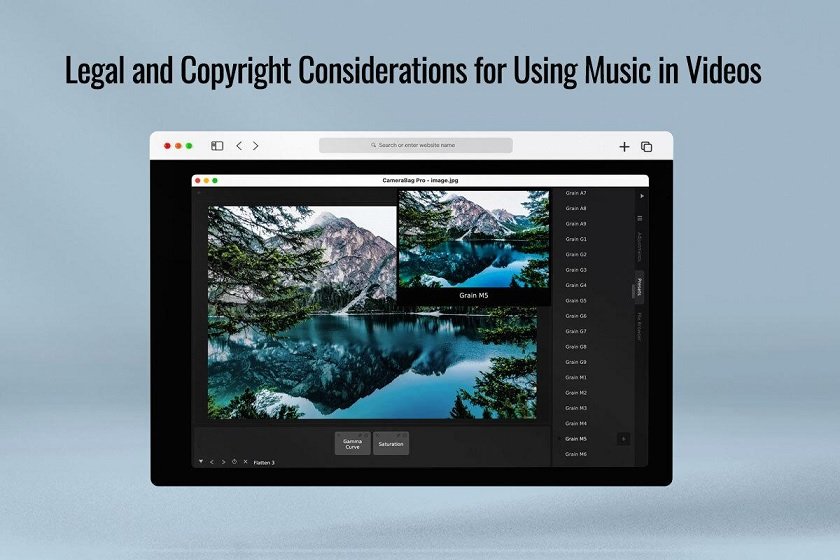So, you are ready to take the world by storm with your perfectly shot and edited video? But as you click the Export option for your magnum opus, you remember something is missing – music!
Needless to say, it is the perfect soundtrack and background score that elevates the visuals, fires up emotions, and tells a story that resonates with the viewers.
But where do you find the perfect music? How do you add background music on a Mac? And most importantly, can you use the music without any legal repercussions? You’ll be pleased to know that the first two questions are easy to answer:
- You will get music for your video on YouTube, TikTok, Instagram, Twitch, Facebook, SoundCloud, etc.
- You can add background music on Mac via iMovie. Open iMovie > click on File and choose Import Media to create a new iMovie project > drag the video to the project timeline at the bottom > drag and drop the background music into the timeline to include it > adjust the duration of the music to match the video by moving the slider > once you are satisfied, expert the video and save it.
Now, to answer the third question, it would require you to explore the murky waters of music copyright. This guide is put together so you can add music to your masterpieces without the fear of legal fees.
Understanding Permissions and Ownerships in the Musical Maze
In the bustling marketplace of melodies, each meticulously crafted song belongs to someone – the record label, the artist, the composer. The creator’s ownership is protected by copyright. This is a legal shield that guards their work from being stolen or used without authorization.
Therefore, before importing the music and using it in your video, you must be aware of the common pitfalls.
- Royalty-free music in the public domain
In the public domain, melodies roam free. They are not burdened by copyright. These songs or musical treats are donated to the public or created before a certain date. Therefore, they offer royalty-free bliss.
Musopen.org or Fressound.org are websites where you will find songs available for public use.
- Royalty-free licenses
If you don’t mind paying, you can venture into the marketplace of royalty-free licenses. Here, you are offered songs by the creators in exchange for a fixed fee.
Artlist and Pond5 are popular websites boasting diverse libraries. These websites offer you permission to use the songs or music in your videos for non-commercial or commercial purposes.
However, you must remember to carefully go through the terms of the license.
- Fair use
Fair use is a limited doctrine that allows limited use of copyrighted materials for education, commentary, criticism, and related purposes. You must check whether your video qualifies by considering different factors, such as the nature of your work, the amount of music used, etc.
It is best to navigate this path with legal counsel as it can be complicated.
- Sync licensing
You can consider getting a sync license if you want to include tailor-made tunes in your videos. With this, you will be contacting the copyright holder to negotiate a license for using their music or song in the video. This might be costly, but it grants you exclusive rights.
How to Avoid Copyright Strikes and Claims?
These are some helpful tips to remember to ensure copyright woes can be avoided:
- Credit the music creators to remain transparent. This also means you are showing your respect and appreciation for the music creators. You can list the song title, artist, and source in your video description.
- Before using music in your videos, ensure it is royalty-free or buy the proper license to avoid getting into legal trouble.
- Carefully select the music platforms and go through their terms and conditions associated with using music in your videos.
Last but not least, the best way to avoid copyright strikes and claims is to create original music for your videos by collaborating with musicians. If you go down this path, you will be obtaining the exclusive ownership rights of the music. This will also provide you with the opportunity to tailor your music according to the specific requirements of your videos. Of course, creating original music is costly. So, if you don’t have the budget to collaborate with musicians or don’t have anybody on your team who can create music, you may have to navigate the maze of ownership, licensing, and permissions.
The Bottom Line
Adding music to your videos can heighten your creative flair and ensure your stories resonate with the audience. Although Mac computers offer you all the tools you need to edit videos and add background music to them, you must be careful when choosing the music or song to add. Not all compositions are available for free. You may have to pay a licensing fee to use the music. If you are not careful, you will be in the middle of copyright claims.



